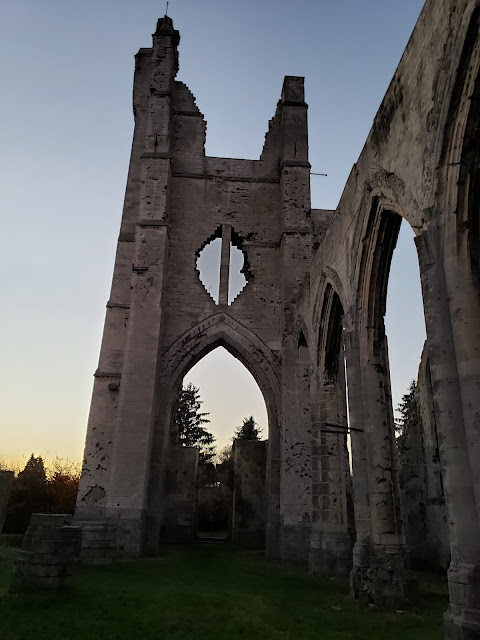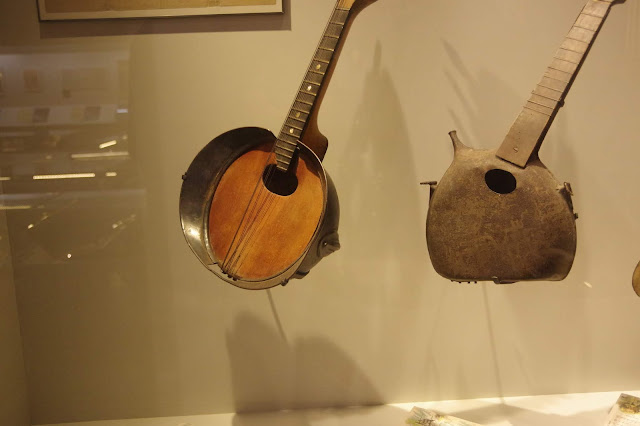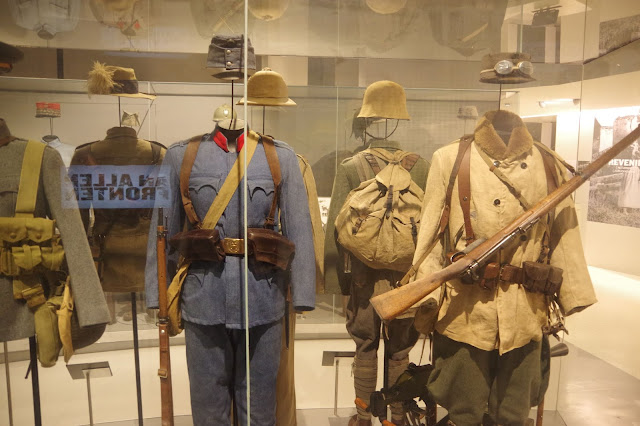These are scenes from Meaux's Musee de la Grande Guerre, a museum dedicated to the topic of World War One. The displays here are really impressive.
All photos are MKTH photographs.
This museum has a fine display of weapons, including artillery.
An example of French uniforms early in the war. Note the red trousers and the dark blue jacket.
An example of the type of uniforms the Germans wore prior to World War One. The coat is a "Prussian Blue" service coat with red flashing. The helmet is the classic German "Pickelhaube" that survived into the early years of the war.
A panting commemorating the alliance between republican France and Imperial Russia.
Imperial Russian flag in Russian and French, for those units that served on the Western Front.
Example of early semi automatic pistols.
Display of British uniform.
British uniforms.
German uniforms.
French helmet, top, outfitted with net. German M16 helmet below, with painted camouflage.
Ship camouflage.
French armor, and primitive trench club.
German armor.
Early helmets.
Trench hand to hand weapons, including entrenching tools.
Light machine guns, Lewis top, Chauchat bottom.
Small arms of the Great War.
French cavalryman's armor. Early in the war, things remained very 19th Century for awhile.
Horizontal stabilizer of a French airplane.
Signalling flag.
Early airborne ordinance.
French winter uniform.
French uniforms.
Russian uniform.
British uniform.
French uniform on left, German on right.
German helmet pierced by a projectile.
French helmet likewise pierced.
Travelling Communion set.
British desert uniform.
German uniform for African troops in Africa.
Gurkha kukri.
U.S. handguns.
Display of American weapons.
Trench mortar.


























































































































































































